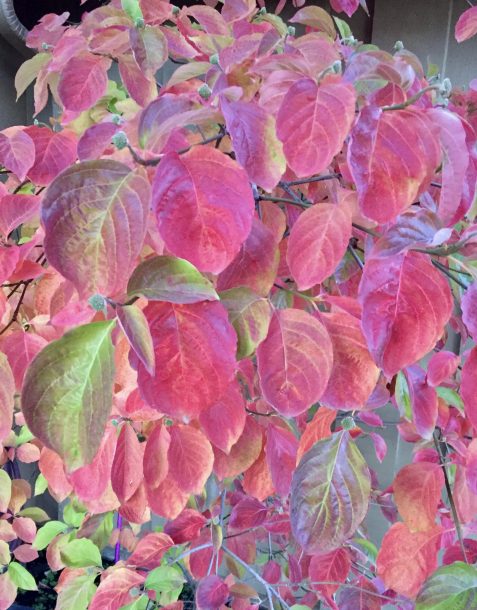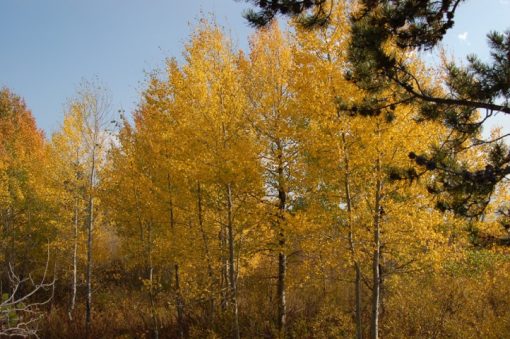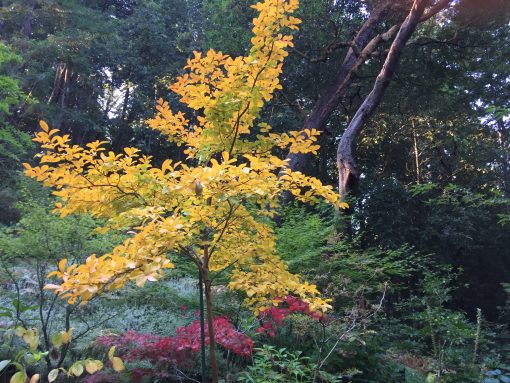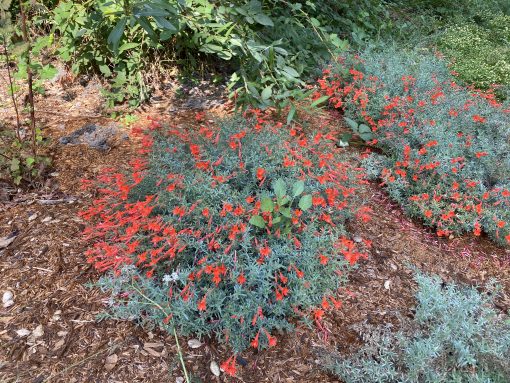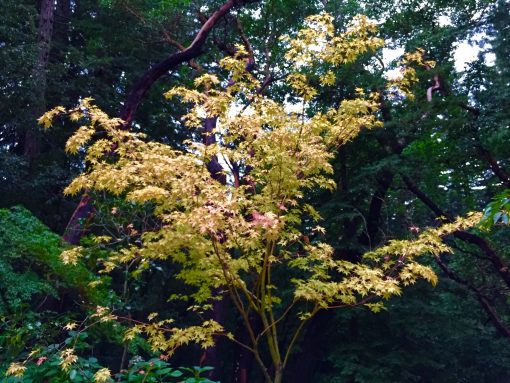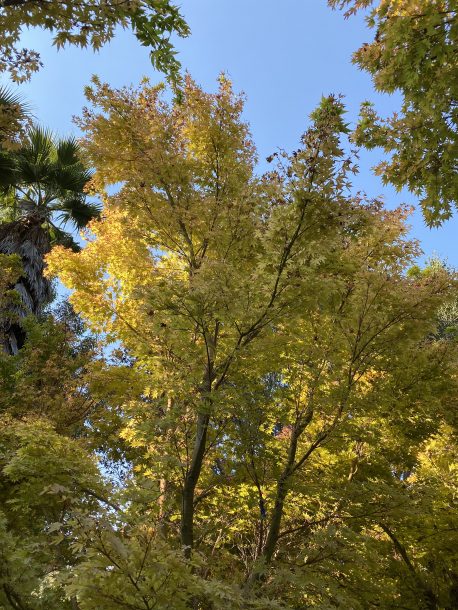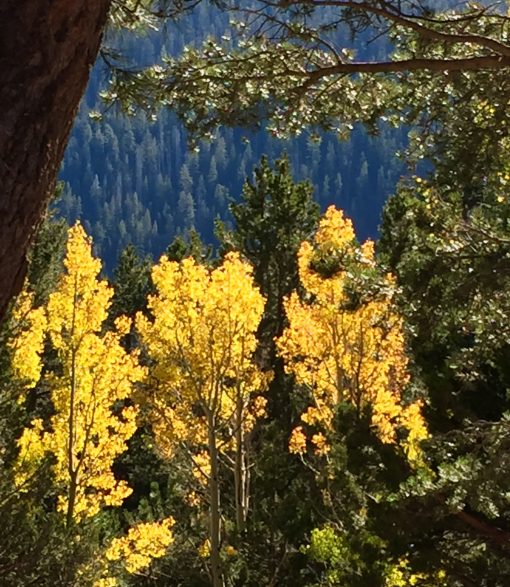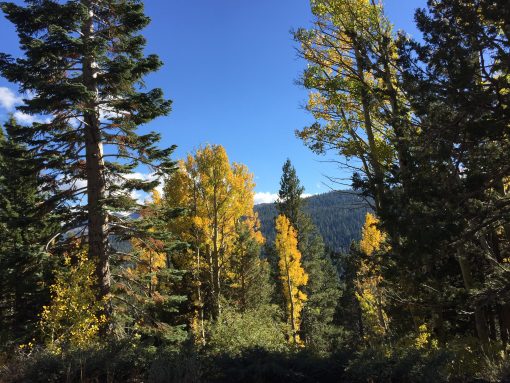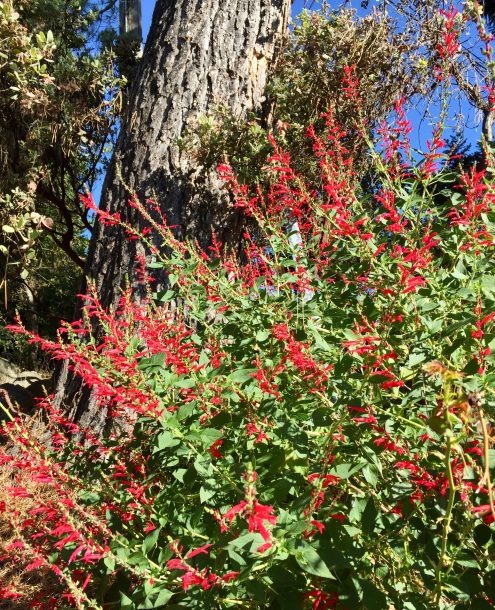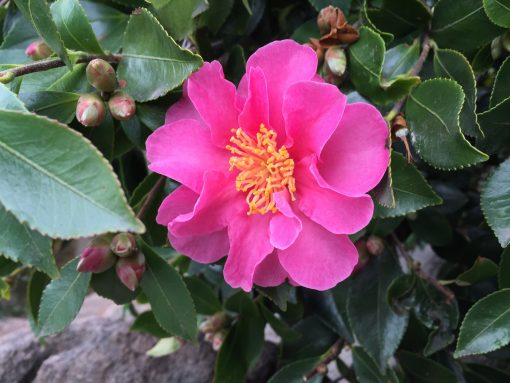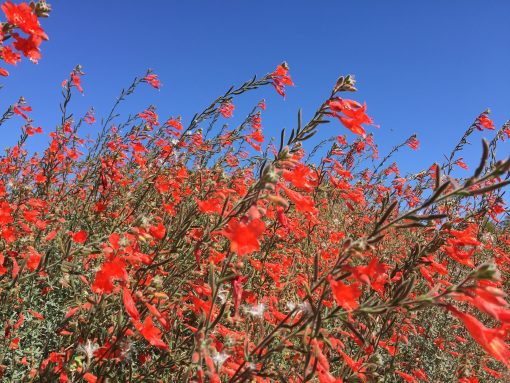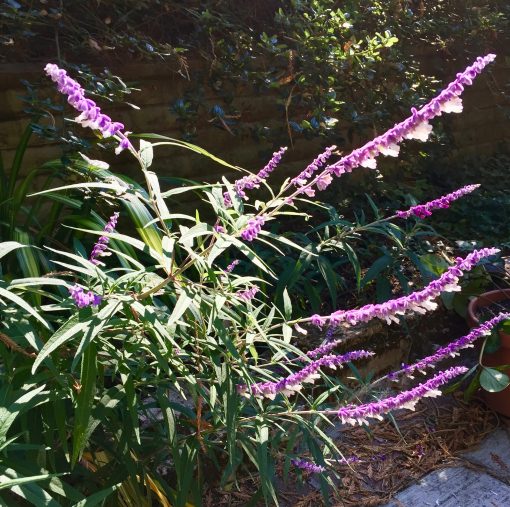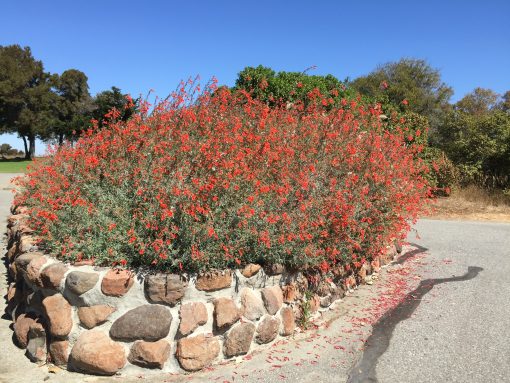
I happened last Sunday morning at 2 a.m. That’s when daylight saving time ended and clocks went back an hour. Sure I got an extra hour sleep but the end of daylight savings time signals to me that autumn is really here in our mild California surroundings
I try to enjoy these very crisp mornings and warm days but I miss the daylight. Mixing in late flowering perennials as well as shrubs with bold leaves and a wide range of autumn color will make any garden more captivating.
Bright trees and shrubs add color flashes to fall gardens. Sasanqua camellias have already started blooming and will continue to flower throughout the winter. In addition to asters and rudbeckia, Japanese anemones are the stars of the border at this time of year. The electric blue flowers of dwarf plumbago contrast with reddish leaves as night temperatures dip, Encore azalea and Endless Summer hydrangea are blooming now, too.
Other perennials that are blooming now are California Fuchsia, Pineapple Sage and Mexican Bush Sage.
I used to have a patch of California Fuchsia. Starting in the summer and flowering through fall this California native is covered with orange or scarlet-orange flowers that attract hummingbirds like crazy. A great plant along the path or draping over a rock wall this perennial thrives in areas that might fry other plants. Also known as Epilobium canan or Zauschneria it is in the evening primrose family and native to dry slopes and chaparral especially in California.

Mexican bush sage look great blooming alongside California fuchsia. Orange and blue are opposite on the color wheel so they look fabulous together. The bright red flower spikes of Pineapple Sage (salvia elegans) would make the whole area a hummingbird feast.
But what about vivid foliage in the garden? Which plants put on the best show in our area? Here are some of my favorites:
A great tree for the gardener interested in edibles is the Fuyu persimmon. This beautiful small tree is ornamental with glossy green leaves and also offers a dramatic fall display in shades of yellow, orange and red. Bright orange fruit begins to develop in late October and clings to bare branches usually through December. The tree looks more like it’s covered with holiday ornaments than fruit. And have you priced persimmons in the store lately?
Blueberries are a must for the edible gardener. They make a beautiful hedge that provides showy red or yellow fall color. Because of our colder winters here in the mountains, we can grow both northern highbush which are self-fertile and southern highbush which produce better with another type to pollinize them. They can be great foundation plants around the home as well as in the garden.
A vine that lights up with the onset of autumn is Rogers Red California grape. If you have an arbor, wall or fence that needs covering quickly, this is your plant. The green and gray leaves are transformed in autumn into great draperies of rich, scarlet red leaves with clusters of summer fruit turning all shades of purple.
Japanese barberries are deer resistant, low water-use small shrubs that make them superb hedge plants, background plants against fences and foundations or accent plants. Red or lime colored summer foliage changes to orange, red or amber in the fall. I love the graceful growing habit of many of the varieties but there are pillar forms and also dwarf types.
Bright foliage on trees like red maples, liquidamber, Chinese pistache, ginkgo, ornamental pear, cherry or crabapple, dogwood, goldenrain, locust, katsura, oak, redbud, sumac and witchhazel all add to the fall drama of the landscape.
Light up your garden as the light fades and the days shorten. I know my garden needs a greater variety of fall color than just the Japanese maples.

